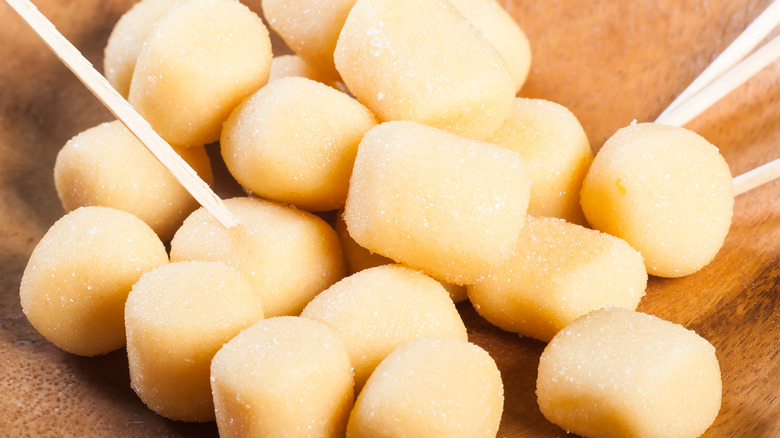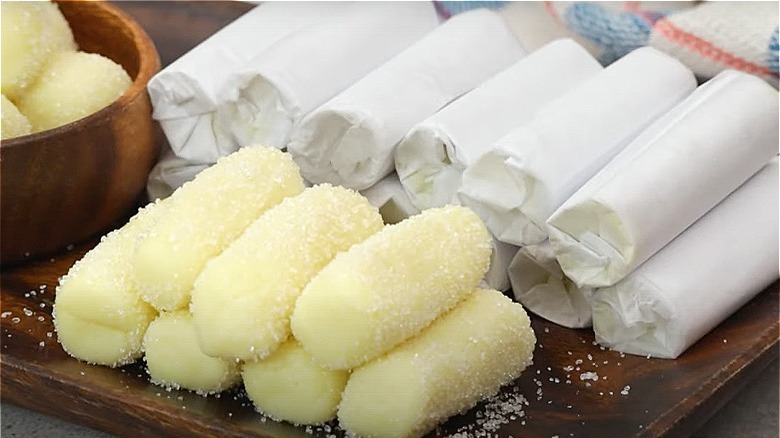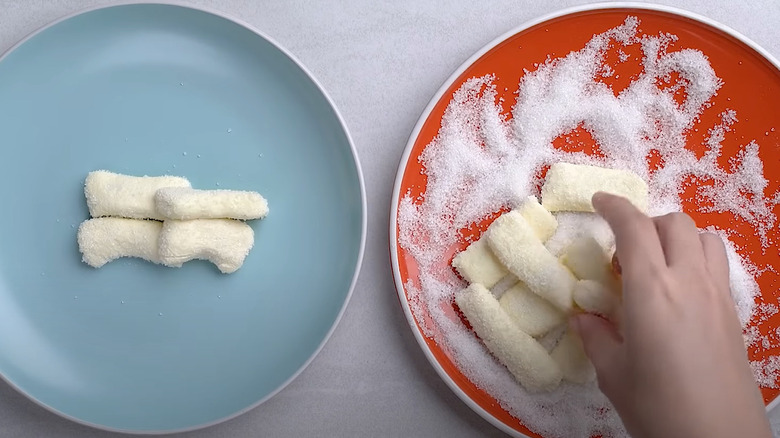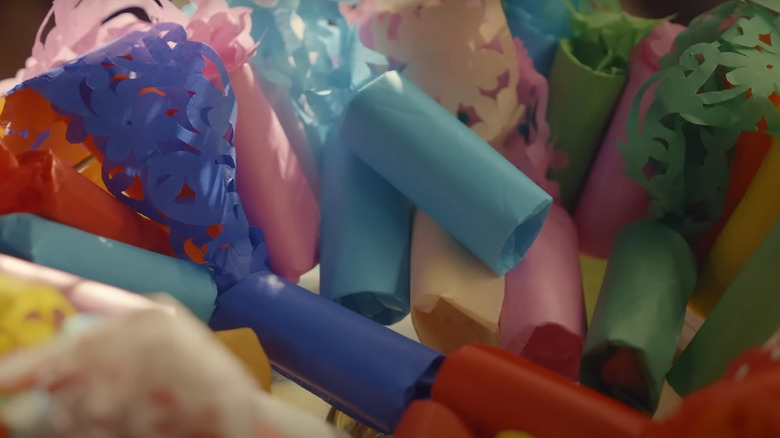Pastillas Are A Milky Sweet Treat You Should Know From The Philippines
A pastilla can mean different things to different food cultures. In Morocco or Algeria, pastilla is a savory pie made with a filo pastry while to the Spanish, pastillas can be medicines, microchips, chocolate bars, and more, depending on the context where the word is used. But to those with ties to the Philippines, pastillas de leche are milky candies wrapped in Japanese tissue paper or "papel de hapon."
Like its name might suggest, pastillas de leche isn't exactly native to the country. Food historian Felice Prudente Sta. Maria tells Serious Eats the country's beloved dessert likely made the leap across the Pacific Ocean by way of the Manila Spanish galleon trade, which took place between 1565 to 1815. After all, sweetened milk prepared in different ways can be found across South America, and this includes Mexico's cajeta, Chile and Equador's manjar, and Brazil's brigadeiro.
Candy isn't the only food item that made the journey from the Americas to Asia. Aside from pastillas de leche, the galleon trade also brought ingredients that are now considered essentials to Philippine cuisine, including corn, avocadoes, pineapple, tomatoes, and chayote, per Meryenda.
Galleon traders introduced pastillas de leche to the Philippines
The idea of turning milk into something solid didn't likely exist in the Philippines until the Spanish came — as evidenced by the fact that the word "cheese" does not exist in any of the country's local dialects. Because of this, it is believed that pastillas de leche, which involve turning native water buffalo or carabao milk into a candy by heating the milk before adding sugar didn't happen until after that time too. Food historian Sta. Maria thinks that pastillas de leche likely didn't come to be until around the late 19th century, and that the candy was made in the style that Filipinos themselves preferred. "...they [the candies] were nativized, interpreted in the way Filipinos preferred them. Philippine pastillas come in local flavors: carabao milk with a hint of Dayap citrus, mango, tamarind, ubi yam, etc," she stated to Serious Eats.
But even as inspiration for pastillas de leche may have come from Spanish colonizers, its actual origins can be traced back to the carabao farmers of San Miguel town, in the province of Bulacan, which is located north of Manila. And while carabao milk continues to be the ingredient of choice today, it can be more difficult to source, which is how the more widely available cow's milk is now being used to make this traditional sweet.
Types of pastillas and how the sweet is made
Like many Filipino treats today, pastillas de leche has evolved so that Yummy lists at least five different types of pastillas de leche today. There is soft pastillas de leche, which can look like misshapen milky pillows dusted with sugar; hard pastillas, which are made with a mix of condensed and powdered milk; filled pastillas, which have the milk candy dressed up with different flavors; toasted pastillas, which sees the candy's sugar exterior caramelized after time spent in an oven; and "liquid" pastillas, sold in jars and can be used as a spread, much like dulce de leche.
And while there is plenty of creativity involved in making commercial pastillas de leche today, the traditional candy is still best made with carabao milk because the result has a richer taste. But if you can do away with the idea of making pastillas de leche with carabao milk, the candy isn't too difficult to make. Foxy Folksy shares one recipe for soft pastillas, which requires just four ingredients: Fresh milk, powdered milk, caster sugar, and butter, brought to a boil over medium-high heat until the liquid is reduced and becomes a thick paste. You could consider the addition of citrus zest, which cuts the potentially rich flavor of this decadent sweet with a bright burst of flavor.
How pastillas makers elevate the candy
But the experience of eating traditional pastillas doesn't just mean enjoying their milky sweet flavors. For candy makers in San Miguel, it's also about admiring the pabalat — the intricately-designed wrappers that are themselves considered to be works of art, per Artes de las Filipinas.
Pabalat, or borlas de pastillas, take the already brightly colored tissue paper wrappers and embellish that with an intricate paper cutting. Popular designs incorporate cultural symbols that link back to the country — including the native nipa hut, but they can also be more personalized images if the candies are to be given away at important events. The paper cuttings are often done by elderly artisans, who draw out their designs on the paper before using a small pair of scissors to execute their design. It can take only 15 minutes for a skilled artist to create a set of five pastillas wrappers.
Pastillas de leche remains popular across the Philippines today, and while its intricate pabalat is equally appreciated, few are willing to spend the time to learn the craft. So while the traditional candy endures and evolves, its fantastic wrappers could well become a thing of the past.



